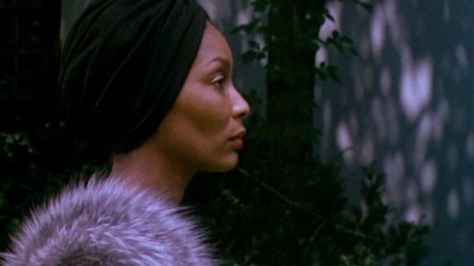
Format: Blu-ray + DVD
Release date: 16 February 2015
Distributor: Arrow Video
Director: David Cronenberg
Writer: David Cronenberg
Cast: Marilyn Chambers, Frank Moore, Joe Silver
Canada 1977
91 mins
Rabid was David Cronenberg’s second Canadian exploitation film, a phase that evolved more or less naturally from his period as an underground filmmaker, before he mutated into a more mainstream auteur via films such as The Fly (1986). It even features a cameo by Adrian Tripod himself, Ronald Mlodzik, star of Crimes of the Future (1970). Bigger in scope than its predecessor, Shivers (1975), but perhaps more rough-edged, it explores the effects of an experimental surgical technique performed on an injured motorcyclist (porn star Marilyn Chambers) where she is treated with ‘undifferentiated tissue’ – an idea borrowed from William S. Burroughs which anticipates current developments in stem cell research. The unfortunate and unexplained side effect is the growth of a retractable, penis-like spike in her armpit, through which she sucks blood and passes on a rabies-like virus.
Cronenberg has always played nonchalantly innocent about this subject’s misogynist undertones. Chambers becomes a kind of Typhoid Mary, immune to the disease herself but passing it on through her depredations, which are all redolent with sexual subtext (hot-tub lesbian encounter; porno cinema pick-up). Though Cronenberg rightly says that the character is portrayed as sympathetic, it is also somewhat hard to relate her given her strange denial of what is clearly going on. The virus seems to induce a kind of amnesia: her victims go about their business after being vampirised, until suddenly going berserk in a way familiar to viewers of Romero or Danny Boyle flicks; Chambers seems to know she’s draining blood, but thinks little of it until the discovery that she’s been spreading a kind of plague brings about a crisis of conscience. Her eventual fate seems uncomfortably like a puritanical judgement, or a deliberately provocative pastiche of one.
The film betrays its status as an early, crude effort, in other lapses in psychology and logic. The opening motorcycle crash seems to happen on a straight stretch of road where the mobile home parked across the road would be clearly visible for some considerable distance; but the hero just yells in panic, drives straight at the obstacle, and then swerves at the last possible moment. That hero (Frank Moore) presents a considerable problem. Cronenberg is only partway to his eventual solution to the monster movie problem, which involves making the monster the main character. Here, our attention and empathy are needlessly diffused by the useless Moore character, whose defining trait is his tendency to be wherever the plot is not unfolding (because if he was ever in the right place at the right time, he would perish immediately). The same problem would afflict the lumpen protagonist of The Brood (1979), but in Scanners (1981) and Videodrome (1983), the hero is himself deviating from the normal, and in the latter film we actually view the entire action filtered through his gradually mutating consciousness, a trope the filmmaker would return to repeatedly.
It’s notable that Cronenberg has never fully embraced the idea of a female lead character. His heroes can develop vaginal openings in their abdomens or be penetrated in their lower spine by Willem Dafoe wielding a bolt gun, they can turn into insectoid hybrids, they can be one consciousness split between two bodies, and they can be psychotic. But they can’t have one of those alien openings from birth: they have to be supplied by the special effects department.
Rabid is most intriguing in its adoption of the plague narrative form used by George Romero in The Crazies (1973), or by Eugene Ionesco in his play Here Comes a Chopper. Rather than following a single character, we follow the disease itself as it filters through society: the scenes of psychodrama with Chambers alternately weeping and feasting are distractions from what could be a perfect Cronenberg hero: a quasi-sexually-transmitted virus.
David Cairns





